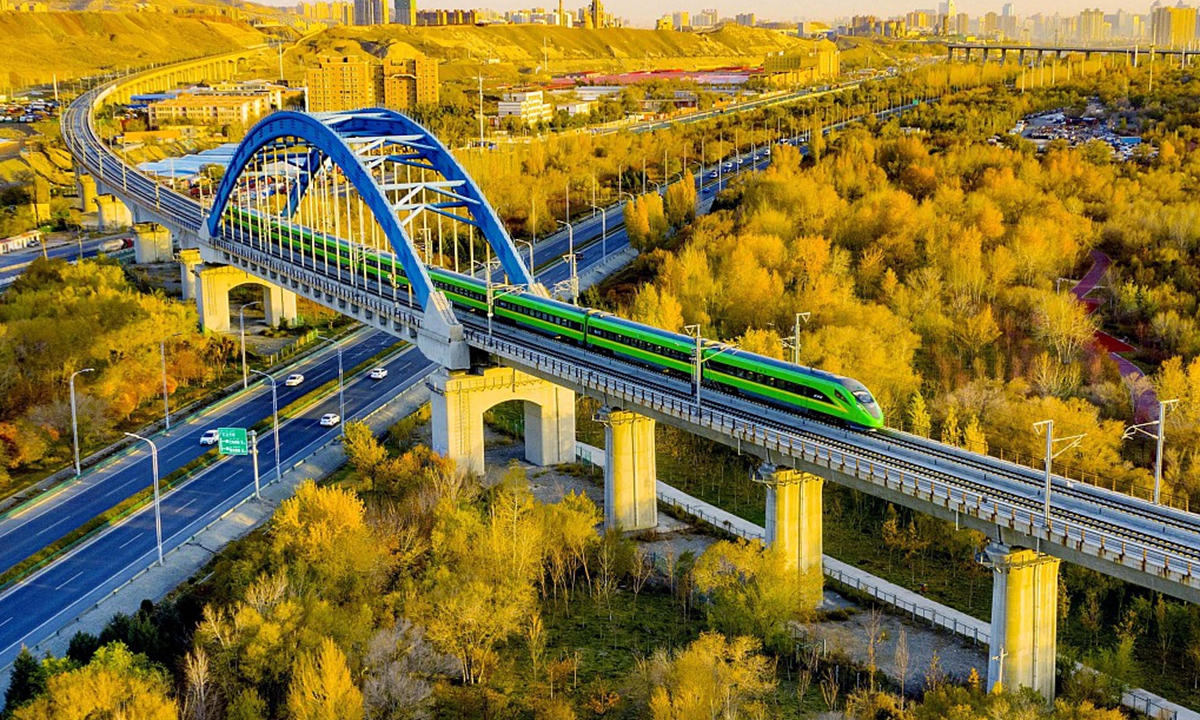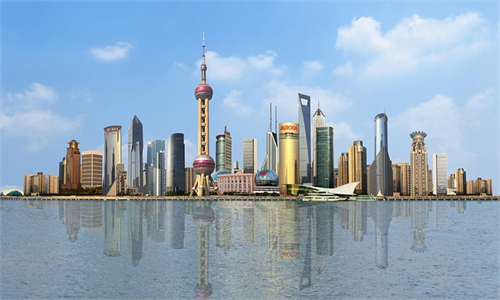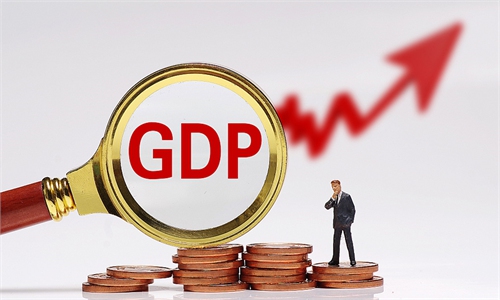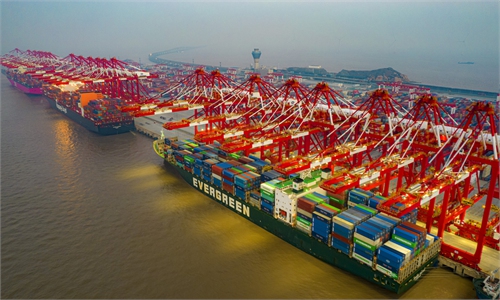China’s GDP growth beats expectations; efforts still needed: Global Times editorial

GDP Photo:VCG
The National Bureau of Statistics of China (NBS) released data on the national economy in 2021 on Monday, with the country's gross domestic product (GDP) expanding 8.1 percent year-on-year, which was well above the government target of "above 6 percent" set at the beginning of 2021, and the previous outside forecast. Ning Jizhe, head of the NBS, said at a press conference that China's economy has reached $17.7 trillion which ranks second in the world, with the per capita GDP exceeding $12,000, which surpasses the world's average.
This is a hard-earned report card. In 2021, the impact of COVID-19 pandemic to the world has continued and the global economy has been struggling to seek recovery. Some developed countries tried to stimulate economy through issuing more currency, resulting in excessive liquidity. The US has continued its unreasonable policy of suppression and "decoupling" from China in economy and trade, which has exerted influence in the external environment for China's development. In the meantime, China's development has encountered many unanticipated challenges, from the flare-ups of the epidemic, to severe flooding; from commodity price hikes to thermal coal crunch. Against this backdrop, it is remarkable that China's economy has bucked the trend and achieved the twin goals of higher growth and lower inflation.
From a historical perspective, China's growth has been moving forward on a high base. Over the past year, China's nominal GDP has increased from 101 trillion yuan ($15.9 trillion) to 114 trillion yuan. The increase is equivalent to $2 trillion at the average annual exchange rate, which is equivalent to the annual economic aggregate of a relatively large major economy in the world. From a global perspective, Germany announced its economy grew by 2.7 percent in 2021, while the US economic growth target was lowered to 5.6 percent for the same year. The figures of the UK and Japan were lowered to 6.9 percent and 2.4 percent, respectively. China's economic growth ranks among the top among the world's major economies.
In the face of enormous pressure from changes in the economic environment at home and abroad, China's economy has shown some new bright spots. For example, in the fourth quarter, the epidemic emerged in many regions, resulting in sluggish consumption and impact on the service industry, but the manufacturing industry performed well. The value-added of high-tech manufacturing and equipment manufacturing went up by 18.2 percent and 12.9 percent, respectively.
China's total foreign trade in goods surpassed $6 trillion in 2021, with its scale reaching a new high and the quality steadily improving. In 2021, China's actual use of foreign capital was 1.15 trillion yuan, a year-on-year increase of 14.9 percent, and the scale of attracting foreign capital hit a record high. These are a vivid portrayal of China's pursuit of progress while maintaining stability to promote high-quality development, and also a powerful manifestation of China's unswerving efforts to advance reform and opening-up.
Of course, while seeing the achievements, we must also face the problems and challenges head-on. China is still the largest developing country in the world. Although its per capita GDP exceeds the world average, it still lags far behind the major developed countries. The Central Economic Work Conference held in December last year pointed out that the country's economic development still faces pressure from the three aspects of demand contraction, supply shocks and weakening expectations. This is not only a factual summary of the potential risks of the current economy, but also sounds the alarm to all sectors of society. For example, demand is affected by the epidemic, downstream small- and medium-sized enterprises are facing difficulties in production and operation, and market expectations and enterprises' confidence fluctuate to some extent. These are problems that we must face up to and solve.
China is a country that concentrates its efforts on major issues, which is a significant advantage of its system. In the past two years, we have achieved "hard core achievements" in the big test of fighting the epidemic and protecting lives, health and the safety of the Chinese people to the greatest extent. Now, our anti-epidemic achievements should continue to translate into tangible economic results. China's anti-epidemic endeavor has once again demonstrated that the Party's leadership is the mainstay to overcome all difficulties and risks. We also have every reason to believe that in the post-epidemic era, adhering to economic development as the core, which is the requirement of the Party's basic pathway, will be fully reflected in China's pragmatic actions at all levels. Such actions include adhering to seeking truth from facts and opposing formalism, improving professional ability, acting in accordance with economic rules, and being good at creatively promoting various work based on reality.
The momentum of the world either flourishes or declines; the state of the world either progresses or regresses. Looking back at history, China's economy has always been progressing by dealing with challenges and overcoming difficulties. In the past few decades of development, there were much more serious difficulties, but they didn't crush us, and the waves of "China collapse theory" from the West have continuously fallen through. The fundamentals of the Chinese economy, characterized by strong resilience, enormous potential and long-term sustainability, remain unchanged. We are fully confident in the future of China's economic development.



